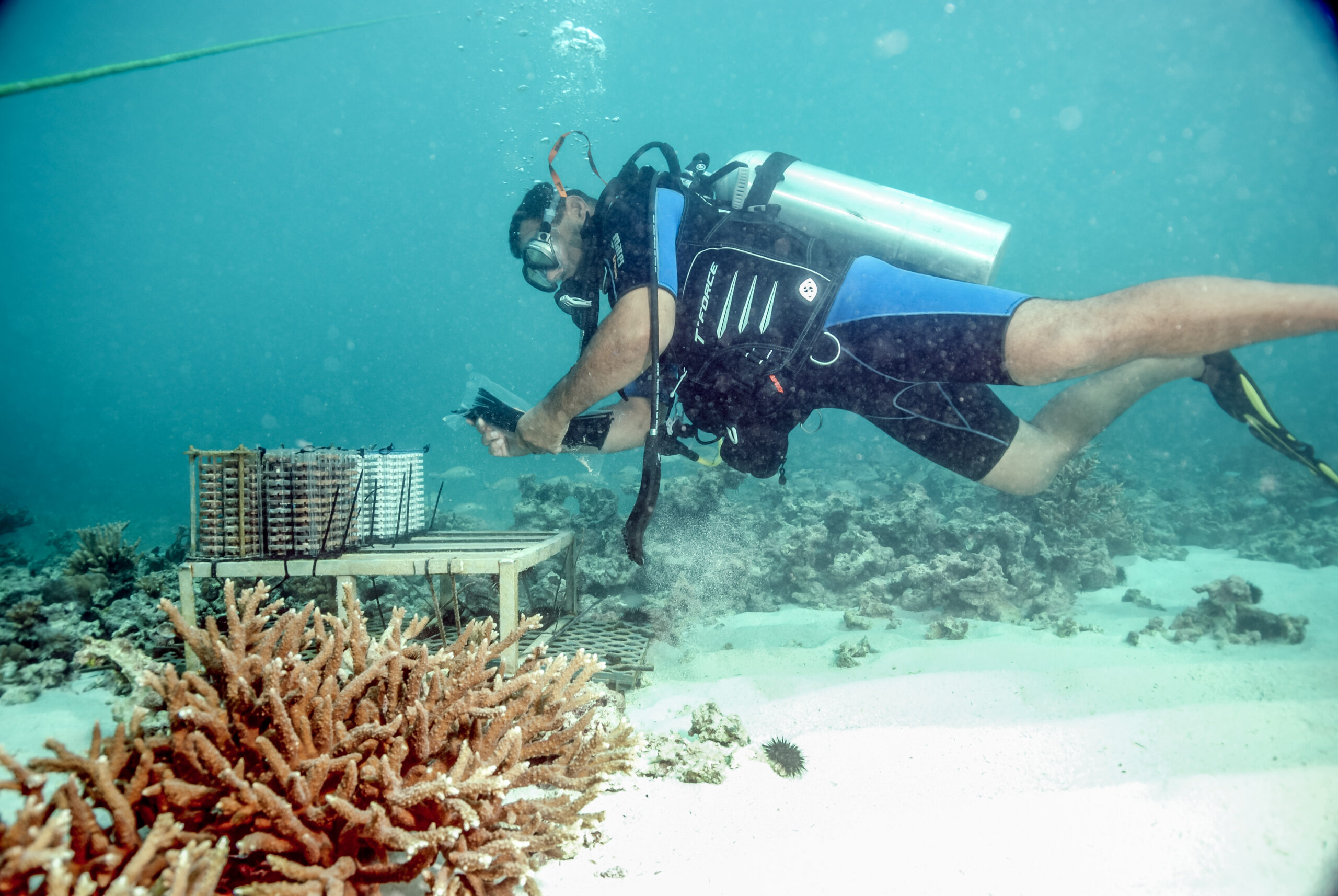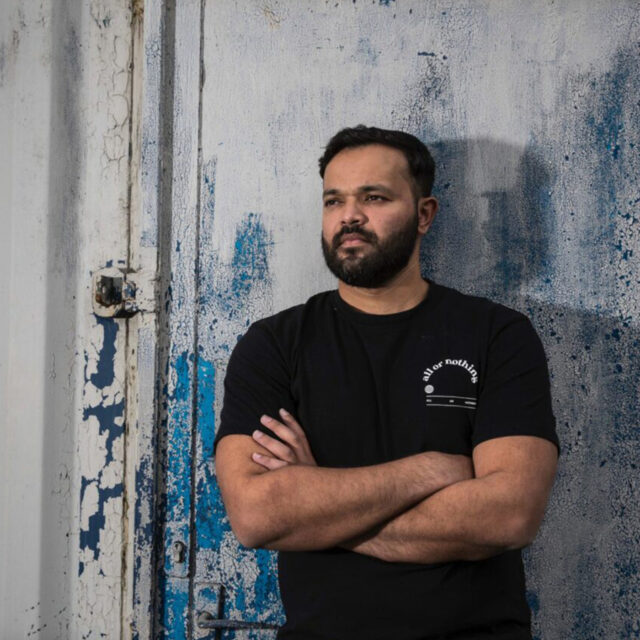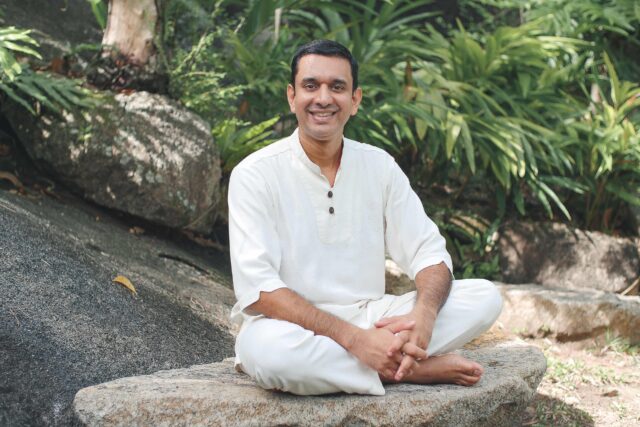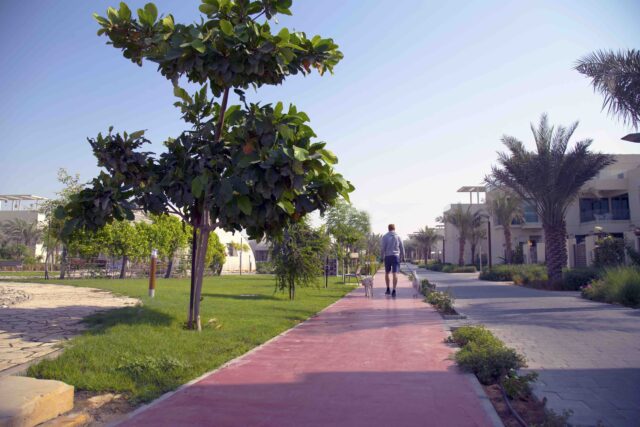It’s no secret that the Arabian Gulf is brimming with beautiful marine life such as dolphins, turtles, dugongs and other fascinating species. However, few people know that the biggest coral nursery in the region lies underneath the bright blue waters just off the coast of Abu Dhabi.
Forming part of a major coral conservation project organized by The Environment Agency – Abu Dhabi (EAD), huge wire mesh sheets have been pinned to the sea floor. These are being used to grow thousands of coral fragments that will eventually be replanted in damaged reef areas across the emirate.
Leading the way in coral conservation
Launched in 2021, Abu Dhabi’s coral restoration program is led by a team of 15 EAD scientists and experts. Over the past two years, the team has translocated around 314,000 coral fragments, the equivalent to roughly 71 hectares of coral reef. This makes it one of the largest areas of coral restoration in the entire region. The UN has also listed it as one of the globe’s top 10 pioneering restoration efforts.
Hamad Al Jailani, assistant marine habitats scientist at EAD, can often be found down on the seabed in his scuba gear, working to monitor and care for the coral nurseries. He explains that coral is a fascinating kind of marine invertebrate.
“Corals are often mistaken as plants, but they are actually animals,” says Al Jailani.
“Part of the anthozoa group of marine invertebrates, they typically form compact colonies of many identical individual polyps. These colonies have a hard structure, and their vibrant color comes from a symbiotic algae called zooxanthellae. This algae helps the coral survive by providing it with food through photosynthesis. In turn, the coral polyps provide the zooxanthellae with a protected environment, and the nutrients they need to carry out the photosynthesis process.”

An essential link in the marine ecosystem
Coral has a key role in Abu Dhabi’s marine ecosystem. They provide food and shelter for organisms at every stage of the food chain.
“Coral reefs are amongst the world’s most important and productive marine habitats, and Abu Dhabi is home to around 502km2 of them,” continues Al Jailani.
“Coral is considered a keystone species and an ecosystem engineer. It creates habitats for fish and other marine life, and the marine ecosystem depends on coral in order to thrive.”
Unfortunately, corals face many risks, including coastal development, sedimentation, dredging and land reclamation, and run off and outflow from desalination plants and other industrial factories. The Endangered Species Act lists more than 25 coral species as threatened or endangered.
Plus, as climate change continues to raise the temperature of the oceans, the Intergovernmental Panel on Climate Change warns that a rise of 1.5°C threatens 70 to 90 percent of corals with extinction. If temperatures rise even further to 2°C, it is feared that 99 percent of corals could disappear.

Important climate change studies
However, there is hope on the horizon. The Gulf region contains the world’s hottest seas, and Abu Dhabi’s corals have miraculously developed to withstand these extreme conditions. So, by studying local corals, Al Jailani and his colleagues are hoping to find ways to help protect the rest of the world’s reefs.
“Without coral, the ecosystem would completely collapse and so we need to help them to adapt to climate change,” he says.
“This is done by implementing a range of processes that aim to enhance temperature tolerance, growth and reproduction. We are actively intervening to try to accelerate these naturally occurring evolutionary processes.”

State-of-the-art nurseries
Abu Dhabi’s coral nursery forms a key part of the EAD’s efforts to counteract the negative impacts of climate change.
“We collect resilient corals from around Abu Dhabi and grow them in the nursery before they are fragmented and translocated to degraded and damaged reefs,” describes Al Jailani.
“Our partners at Archireef have printed artificial reef structures that help the corals establish themselves on the ocean floor. Our ultimate aim is to strengthen and increase coral habitat and cover throughout the emirate.
Archireef is a climate technology company headquartered in Hong Kong. By partnering with ADQ, the Abu Dhabi-based investment and holding company, the EAD commissioned the creation of 40 square meters of artificial 3D-printed terracotta-based reef tiles. Environmentally friendly and placed across the marine protected area of Um Khorah Island in the Al Dhafra region of Abu Dhabi, the coral tiles mimic the natural pattern of corals and encourage the nursery-grown coral fragments to grow.

A community effort
The EAD has just launched a volunteer program that allows members of the public to join in with its restoration activities. Al Jailani also lists some other ways that residents can help the region’s corals.
“The first step in helping is understanding the issues. The more you know about reefs and their importance, the better you can educate others. Making sustainable seafood choices avoids contributing to the overfishing of reef ecosystems, and reusing, recycling and reducing water usage helps minimize ocean pollution,” he says.
Practicing responsible tourism when you go away on vacation is also key.
“When snorkeling or diving, don’t touch the coral or stir up sediment as this can damage the fragile organisms,” warns Al Jailani.
“Support tourism operations that actively contribute to reef conservation and, if you spot illegal fishing or destructive practices while at sea, report it to local authorities. By collectively taking these actions, we can contribute to ongoing efforts to conserve and restore reefs worldwide.”

Other regional coral protection programs
Other global coral restoration projects include the Coral Restoration Foundation in Florida, and the Reef Restoration and Adaptation Program in Australia.
Here in the Middle East, Red Sea Global, the developer behind tourism destinations The Red Sea and AMAALA in Saudi Arabia, has just conducted one of the world’s largest environmental surveys of wildlife ecosystems. Carried out along 250 kilometers of Red Sea coastline, the survey revealed that AMAALA is home to over 144 species of corals, including hard, soft, branching, and encrusting varieties.
Once fully operational, the zero-carbon AMAALA project will run initiatives in coral reef management, iconic species protection, protected area management and fighting plastic pollution. It has already tagged multiple sooty falcons and Hawksbill Sea turtles to help scientists better understand their behavioral patterns.
In addition, a mammoth new ecotourism destination is set to arrive in Dubai by 2040. Hailed as the world’s largest ocean restoration facility, Dubai Reefs will span 200sqkm of artificial reefs, one billion corals and 100 million mangrove trees.
Baharash Bagherian, CEO of URB, the developer behind Dubai Reefs, explains that the health of the UAE’s cities is directly linked to the health of its oceans and corals.
“The ocean is the source of life. It controls everything. Our ocean will be entirely different by the end of the century if we don’t take action today. As an innovative coastal city, Dubai is best positioned to lead such a transformation. Beyond creating a unique resilient destination for ecotourism and marine research, Dubai Reefs aims to become a blueprint for ocean living, while mitigating the impacts of climate change.”
For more information about volunteering with the EAD’s coral restoration project, contact the team on +971 2 693 4444 or email [email protected].






